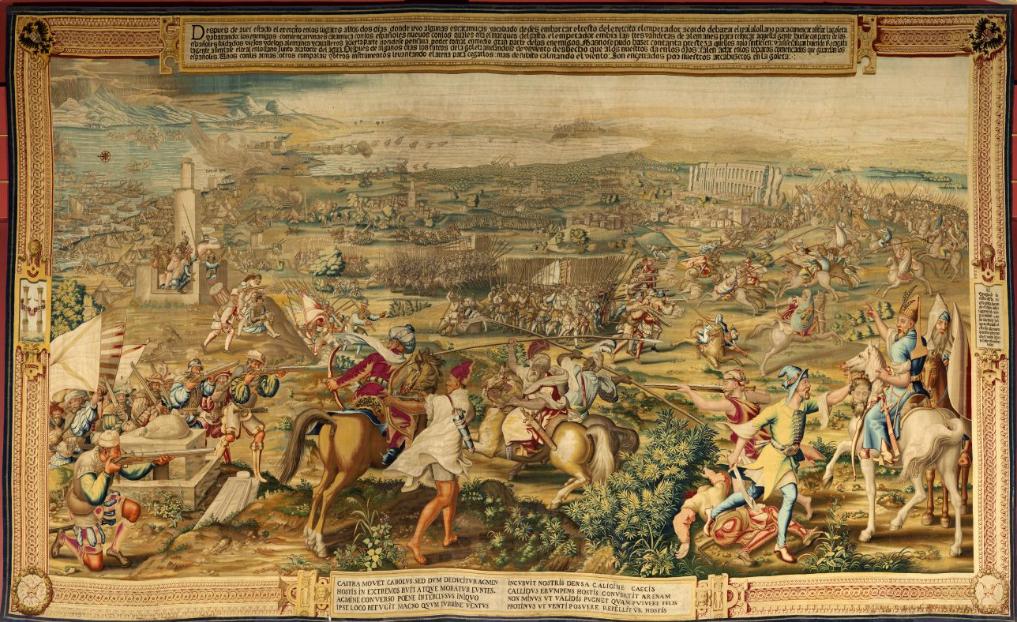
Shop Amazon - Create an Amazon Baby Registry
In 1546 Charles V commissioned the Conquest of Tunis series in honour of his recapture of Tunis from the Turks in July 1535.
From the 1744 copies of the tapestries:
The Attack on La Goleta.
The attack on Goleta lead by the Marquis del Vasto, Charles V’s chief commander and general is presented in this panel in an epic, panorama view.
Despues de aver estado el exercito en los lugares altos dos dias:
donde ovo algunas escaramuças, y acabado de desembarcar el resto del exercito:
el emperador acordo de baxar el real alollano para començar a sitiar la goleta y abaxando:
los enemigos comieçan una escaramuça con los españoles nuevos, con los quales esta el marques del Gasto.
El emperador embiadas tres vanderas de alemanes para reforçar aquella gente:
buelve con parte de los españoles, soldados viejos, y de los alemanes y cavalleros, a cierta parte donde se pensava poder tomar en medio gran parte de los enemigos.
Mas no se pude hazer con tanta presteza quellos no lo sintieren y asi se salvan huiendo.
Regocida la gente, asientase el real en lo llano, junto a la torre del agua. Despues de algunos dias,
los turcos de la goleta aiudandose de un viento deshecho que a los nuestros da en los ojos: salen a dar en los reparos començados que guardan los españoles.
Unos con sus armas: otros con instrumentos, levantando el arena para cegarlos: mas de subito calmando el viento: Son encerrados por nuestros arcabuzeros en la Goleta.
 |